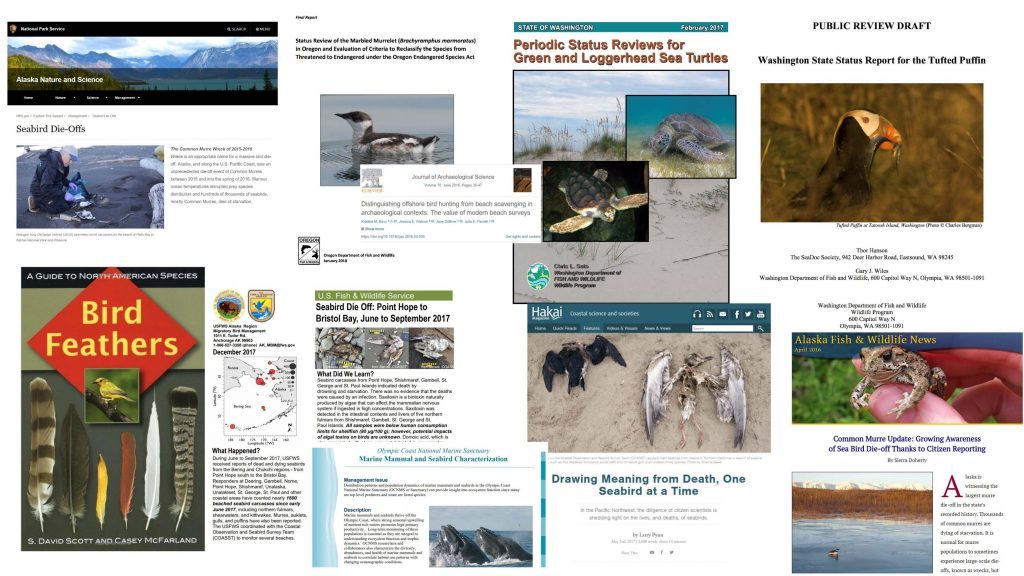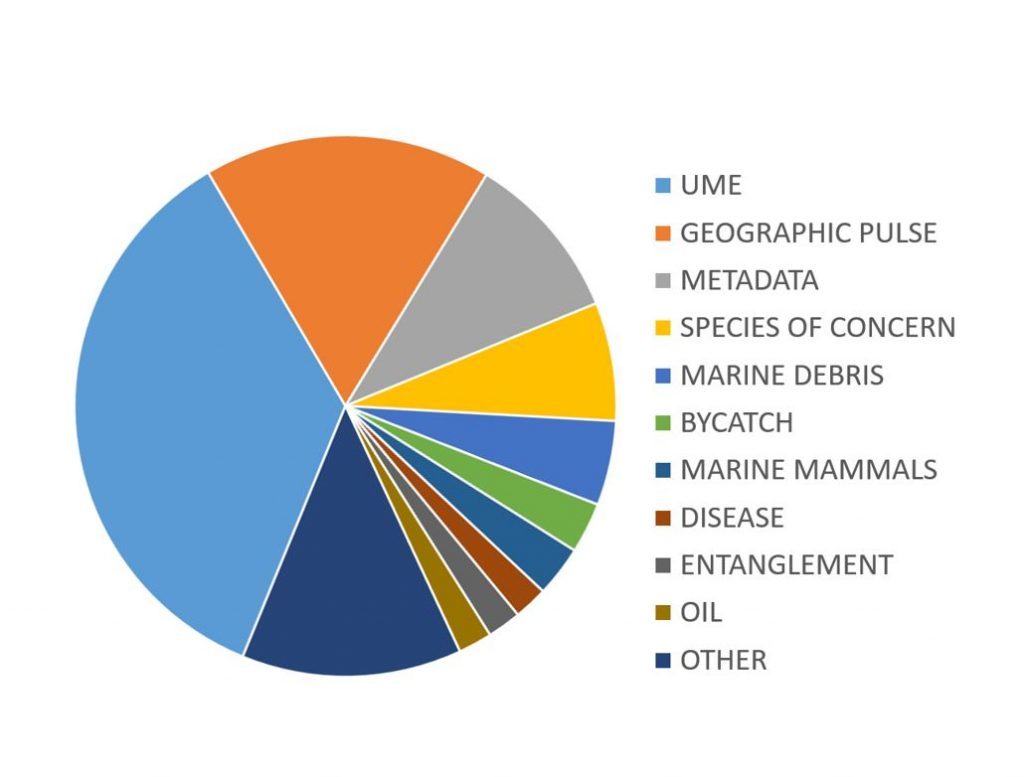What do the following things have in common?
- A study distinguishing offshore bird hunting from beach scavenging by indigenous American civilizations
- A global database of derelict fishing gear wildlife entanglement data.
- Bird feathers: A guide to North American Species
- Reports on stranding trends and population statuses for sea turtles, tufted puffins, marbled murrelets and other species of concern
They are all uses of COASST data — and the list goes on!

From 2008 (when we started keeping track) to today (Feb 26 2018), 207 requests for COASST data have come to the office. Most requests come from partners at resource management agencies like the National Oceanic and Atmospheric Administration, United States Fish and Wildlife Service, National Park Service, and the Washington Department of Fish and Wildlife, but we also hear from academic researchers, non-profit organizations and the media.

Although the beached bird program was designed to generate a baseline against which the impact of catastrophic events, such as oil spills, could be measured, there have been myriad other uses of the high quality information that COASSTers collect!
Of course, the most common use of our data is in defining, tracking, and explaining deviations from the “normal” pattern of beached birds at specific times and places. With a serious uptick in frequency and magnitude since 2014, die-offs are keeping all of COASST busy!
So how are COASST data used in “real time”?
During an unusual mortality event, COASST keeps the pulse coming in from surveys and anecdotal reports, and provides regular updates to the agencies with jurisdiction over the affected species and locations. These agencies make decisions about things like whether to collect carcasses for necropsy, closure of public lands, and hunting/harvesting of seabirds and their eggs.

Collectively, we pull together the puzzle pieces as they unfold: Where, when, who and how many birds? Do we know why they died? What precautions should be taken? Are there other unusual things happening in the ecosystem at the same time?
We attempt to answer these questions, and collaboratively craft the fact sheets that wind up on our respective websites.
COASST surveys are a valued and varied source of information. If you find yourself wanting to know more about how COASST data are used, be sure to check out COASST Stories.
A note to our intrepid marine debris participants: it takes some time to gather enough data to detect patterns and uncover stories. Because this program is so new, we’re just starting to be able to do these things, and plan to feature what we find very soon!
